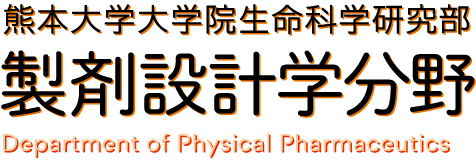In Vitro and In Vivo Gene Transfer by an Optimized α-Cyclodextrin Conjugate with Polyamidoamine Dendrimer
Fumihiro Kihara, Hidetoshi Arima , Fumitoshi Hirayama, and Kaneto Uekama*
Faculty of Pharmaceutical Sciences, Kumamoto University, 5-1 Oe-honmachi, Kumamoto 862-0973,
Japan. Received September 11, 2000; Revised Manuscript Received February 23, 2001
Abstract
The purpose of the present study is to optimize the structure of the polyamidoamine starburst dendrimer (dendrimer) conjugate with α-cyclodextrin (α-CDE conjugate) as a nonviral vector. α-CDE conjugates of dendrimer (generation 3, G3) with various average degrees of substitution (DS) of α-CyD of 1.1, 2.4, and 5.4 were prepared. α-CDE conjugates formed the complexes with pDNA, resulting in a change of the particle sizes of pDNA complexes, but the distinction of physicochemical properties among their vector/pDNA complexes was only very slight. The membrane-disruptive ability of α-CDE conjugates on liposomes encapsulating calcein and their cytotoxicity to NIH3T3 and HepG2 increased with an increase in the DS value of α-CyD. In vitro gene transfer activity of α-CDE conjugates in both NIH3T3 and HepG2 cells augmented as the charge ratio (vector/pDNA) increased, and the activity of α-CDE conjugate (DS 2.4) was the highest at higher charge ratios among dendrimer (G3), the three α-CDE conjugates, and TransFast. After intravenous administration of pDNA complexes in mice, α-CDE conjugate (DS 2.4) delivered pDNA more efficiently in spleen, liver, and kidney, compared with dendrimer and other α-CDE conjugates (DS 1.1 and 5.4). The potential use of α-CDE conjugate (G3, DS 2.4) could be expected as a nonviral vector in vitro and in vivo, and these data may be useful for design of α-CyD conjugates with other nonviral vectors.


